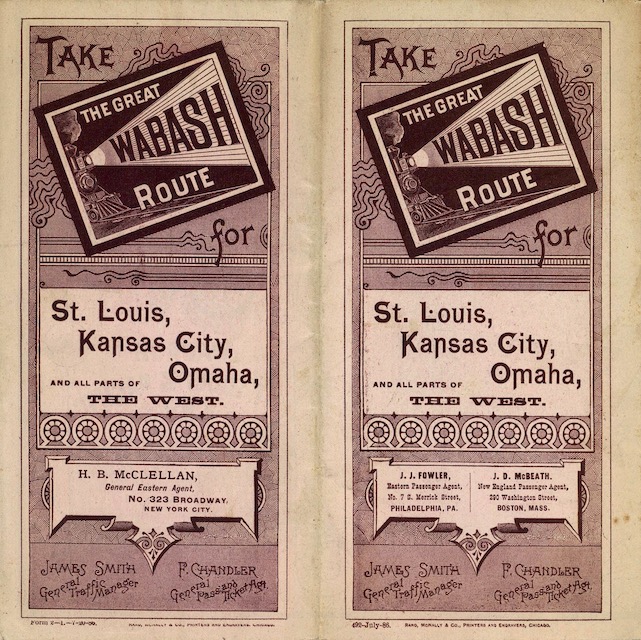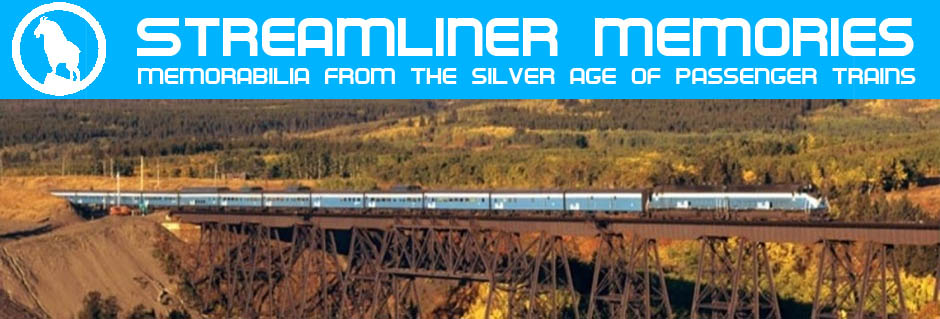Wikipedia says that the first published version of the song Wabash Cannonball appeared in 1904, while before that a song with similar words was called the Great Rock Island Route, which is dated to 1882. However, the Wabash version of the song must have been known by 1886 because this timetable refers to the railroad’s Chicago-Kansas City route as “the Cannon Ball Train.” There were three daily trains on that route, designated numbers 1, 3, and 5, so it is likely that in 1886 the term just applied to the route, not one of the trains. Only in 1949 did the railroad officially run a train called the Cannon Ball between Detroit and St. Louis.
 Click image to download a 16.1-MB PDF of this timetable, which is from the David Rumsey map collection.
Click image to download a 16.1-MB PDF of this timetable, which is from the David Rumsey map collection.
In 1886, the real name of the Wabash Railroad was Wabash, St. Louis & Pacific, being shortened to just Wabash in 1889. In contrast to most railroads that were either east or west of Chicago and St. Louis, Wabash sprawled across the Midwest, reaching Detroit and Toledo on the east end and Kansas City and Council Bluffs on the west end. In between, the railroad had branches to Indianapolis, Chicago, St. Louis, Ottumwa, and Des Moines, among other cities.
Two of the three Chicago-Kansas City trains split at Decatur with part of the trains going to St. Louis. The railroad’s other main trains went between St. Louis and Detroit/Toledo (splitting at Logansport, IN), which had through sleeping cars going over the New York Central and other trains to the East Coast. There were also trains between St. Louis and Kansas City, Detroit and Indianapolis, and St. Louis and Omaha (with the all-important connection with Union Pacific to the West), among others.
Although the map shows that the Wabash line between Detroit and St. Louis/Kansas City connected with a Baltimore & Ohio line to Chicago, the two railroads apparently didn’t try to compete with the Lake Shore or Nickel Plate routes in this corridor. Like some other timetables we’ve seen, this one only shows westbound trains.
Wabash’s through New York-St. Louis cars over the New York Central probably ended in 1906, when the latter acquired the Cleveland, Cincinnati, Chicago & St. Louis (Big Four) railway, thus gaining its own access to St. Louis. Wabash’s route to Omaha was probably not competitive, especially considering at least five other railroads connected with Union Pacific there. For these and other reasons, the Wabash went in and out of bankruptcy several times before being acquired by the Norfolk & Western in 1964.
